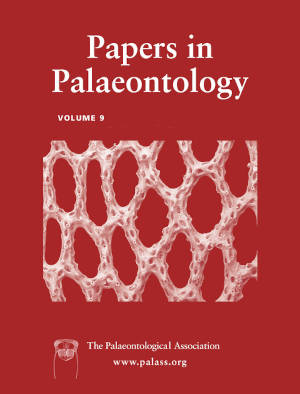Article: On the occurrence of rare nannoliths (calcareous nannofossils) in the Early Jurassic and their implications for the end-Triassic mass extinction
Publication: Papers in Palaeontology
Volume:
9
Part:
2
Publication Date:
2023
Article number:
e1489
Author(s):
Maria Paulsen, and Nicolas Thibault
DOI:
10.1002/spp2.1489
Abstract
Abstract A peculiar record of previously undescribed and/or rarely described nannoliths from the Hettangian to lower Pliensbachian of the Llanbdr (Mochras Farm) core, Wales (UK) is documented here. Some of the observed morphotypes are assigned to didemnid ascidians, commonly observed in the upper Rhaetian, as evidence of the resilience of ascidian tunicates during the end-Triassic mass extinction. One newly described nannolith present throughout the Hettangian and Sinemurian, Quadrifolium hesselboi, is similar to forms previously observed in the upper Rhaetian, and is therefore considered to be a new nannofossil survivor from the end-Triassic mass extinction. High-amplitude changes observed in the absolute and relative abundances of nannoliths, schizosphaerellids and coccoliths across the Hettangian suggest a recovery interval from the end-Triassic crisis spanning the planorbis–liasicus ammonite zones in four distinct steps with high volatility in environmental conditions, followed by the establishment of more stable environmental conditions in the angulata ammonite zone.
